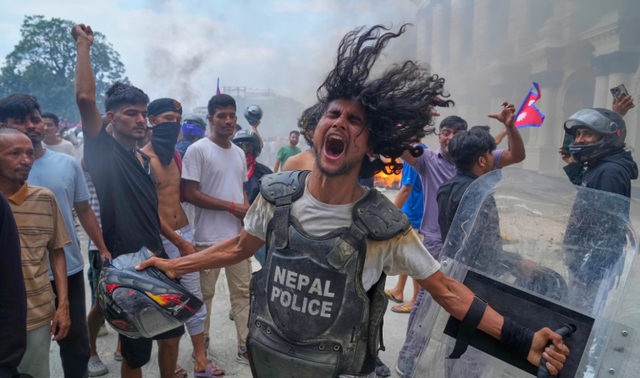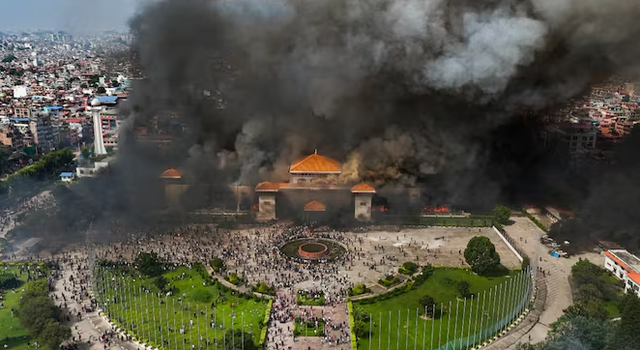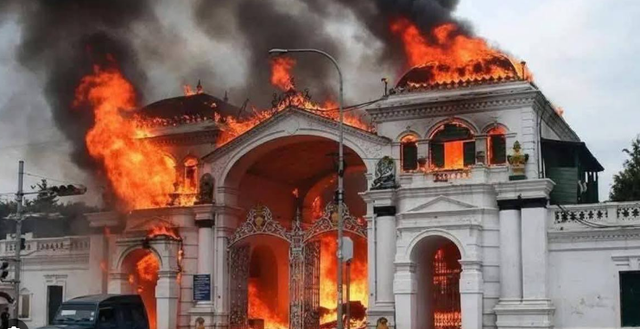Burning Nepal: Youth Uprising and Political Storm

Burning Nepal: Youth Uprising and Political Storm
Nepal’s capital, Kathmandu, has recently turned into a boiling cauldron of fire and revolution. What began as anger against a social media ban has now escalated into a nationwide crisis, shaking the very foundation of the country’s political system.
- The Spark That Ignited the Fire
Under the Gen Z movement, students and young citizens came out against the government’s ban on popular platforms such as Facebook, WhatsApp, X (Twitter), and YouTube. What started as peaceful demonstrations quickly turned violent when police used live bullets, rubber pellets, and tear gas to disperse the crowds. At least 17 people were killed and more than 145 injured, marking one of the deadliest crackdowns in Nepal’s recent history.
- Anger Spills Onto the Streets
The unrest spiraled out of control as protesters stormed parliament, set fire to buildings, and vandalized offices. Senior leaders’ homes were attacked, torched, and looted. The Oli government came under heavy criticism for corruption and mishandling of public anger, adding fuel to the already raging protests.
- PM Oli Resigns
Amid the chaos, Prime Minister KP Sharma Oli resigned, acknowledging the severity of the situation but leaving behind a political vacuum. Several leaders, including a former Vice President, saw their residences burnt down. Families of these political figures have suffered severe losses, further symbolizing the depth of the public’s rage against the elite class.
- Jail Attacks and Mass Escapes
The protests also spilled into prisons. Demonstrators attacked several jails, set them ablaze, and freed thousands of inmates. Reports confirm that more than 3,000 prisoners escaped, some fleeing toward the India-Nepal border. As a result, security forces in bordering Indian states like Bihar have been put on high alert.
- Youth Voices Against Nepotism and Corruption
For Nepal’s youth, this is not just about the social media ban—it is about years of frustration with systemic corruption, nepotism in jobs, and a lack of opportunities. The protest slogan “Nepo Kids vs. Gen Z” highlights a generational fight against an entrenched political class. By silencing social media, the government only deepened the anger of a generation that views online spaces as their primary medium of free expression.
- Army Deployment and Curfew
To control the spiraling violence, the government deployed the Nepalese Army and imposed curfews in several districts. While the streets are quieter now under heavy military presence, the anger has not vanished. The fires may be under control, but the flames of dissent still burn in the hearts of thousands.
Conclusion
“Burning Nepal” is not just about riots or buildings on fire—it represents a deeper struggle between an old, corrupt political system and a young generation demanding freedom, dignity, and accountability. The protests have turned into a historic moment, forcing Nepal to face its political and social realities.


Was a much much required Action , Our leaders Sucks , Thus the gen-Z got angry